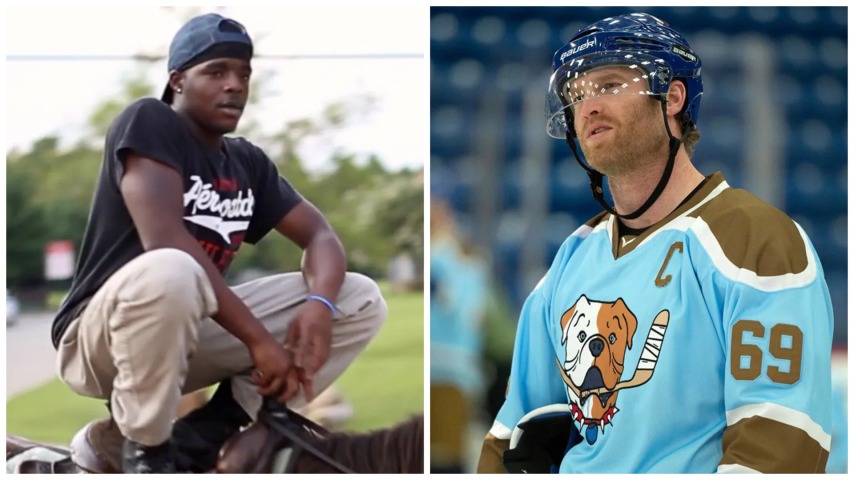Staff Picks: An Oscar nominee's first film and a spin-off that's reinventing itself
A.V. Club Staff
Feb. 22, 2025, 10 a.m.

Staff Picks: An Oscar nominee's first film and a spin-off that's reinventing itself
A.V. Club Staff
Feb. 22, 2025, 10 a.m.


With the 97th Academy Awards just around the corner, Film Editor Jacob Oller dives into RaMell Ross’ first film. Staff Writer Mary Kate Carr’s pick is a bit more puckish, as she heads to Sudbury for Hulu’s Letterkenny spin-off.
As filmmaker RaMell Ross’ Nickel Boys vies for Best Picture and Adapted Screenplay at this year’s Oscars, it’s a great time to check out his first film: the (also Oscar-nominated) documentary Hale County This Morning, This Evening. A dreamy snapshot of Alabama’s Hale County, taken over five years, the film situates itself squarely in the South, in a Black community revolving around the here and now.
Working at the catfish factory and busting your hump to raise your ever-growing gaggle of kids doesn’t leave a lot of time for aspirations, but even those burst from the county’s double-stitched seams. One of the non-narrative film’s subjects, a young basketball player hoping to make the Selma University team, hones these dreams to a fine point. Ross, who moved to Hale County partly to coach basketball, shows an intimate understanding of what the sport represents for its young men—and the sheer work that goes into turning the game into something more.
But whether focusing on sweatdrops on the court, or raindrops on the pavement, Hale County This Morning, This Evening is startlingly composed. It makes sense that Ross would shoot Nickel Boys entirely from the point-of-view of his characters, because much of the documentary feels like you’ve been teleported to a new town, and you’re taking it all in alongside your neighbors. Slow cinema virtuoso Apichatpong Weerasethakul served as creative advisor to Ross during the film, and Hale County reflects (but doesn’t imitate) the Thai filmmaker’s sweaty, lingering experiments. The delicately framed shots watch the small moments playing out with gentle curiosity and an overt appreciation for beauty for its own sake. When Ross is stopped and questioned from time to time by folks nearby, the resulting conversations (usually pointing out some rare or lovely detail he’s looking at, though sometimes people just want to chat) reinforce how ingrained the film feels with the community it’s capturing.
It sounds impossible to condense five years into 76 minutes, but Hale County This Morning, This Evening leaps through time slyly. You hardly feel the days blowing by until it’s too late, even with arresting time-lapses reminding you, over and over, that life is flying. Ross’ film is full of poignancy, and joy, and curious juxtapositions, and outright heartbreak. Its impact comes from its ability to make all of this feel like the natural outcomes of life, rather than the sensational highlights so often found in nonfiction. Like Nickel Boys, the film is inventive and bold. Also like Nickel Boys, it’s due even more appreciation. [Jacob Oller]
Unlike my colleague William, I came into the Shoresy experience having never seen Letterkenny. But last year, my TikTok feed started serving up snippets of the spin-off. Credit to the algorithm for doing its job—it did, in fact, know exactly the kind of content I’d enjoy. I thought the Shoresy snippets were very funny, so I sought out the show on Hulu and binged the whole series in short order. Not for nothing, but I really needed a laugh at the time, and the show provided. It was far and away my favorite new-to-me television experience of 2024. That experience can be yours, too, for the low low price of whatever they’re charging at Hulu these days!
But seriously folks, it’s a good time to get on the bandwagon. If Shoresy was a reinvention of Letterkenny, the upcoming fourth season—which premieres February 26—is a reinvention of itself. Shore’s (Jared Keeso) single-minded passion in life was playing hockey and not losing. But at the end of the third season, age and injury pushed him out of the game for good. And so the fourth season is about what comes next. It’s Shoresy “Part 2.”
Thematically, it comes together neatly: the offseason of Shoresy’s life is set in the offseason. As an audience, we’ve never seen Shoresy or the city of Sudbury outside the context of hockey. Now in this new chapter we get to experience a “Sudvegas summer.” And if Shoresy is at a crossroads in his life and career, so is his team after winning their biggest game yet. Who is Shoresy if he’s not a hockey player? Who are the Sudbury Blueberry Bulldogs if they’re not the underdogs? And what do these guys get up to in the summer, anyway?
This is still Shoresy, so the answer is what fans will expect: partying, crushing beers, pulling girls. The show has its familiar dialogue rhythms and stylistic quirks (sometimes Keeso and co. lean too much into those stylistic quirks, but it is fun). Shoresy‘s signature brand is a mix of raunchiness and rudeness with a surprising amount of heart. Shoresy himself is an asshole and a romantic. The DNA of the show remains unchanged even amid a soft (very soft, don’t worry) reboot.
But Shore and the show that bears his name are in a transitional phase, and that’s an exciting place to jump on board. Much like the titular character, the show itself now has the chance to prove it can exist off the ice in this summertime setting. Plus, I’m just a sucker for a show with a strong sense of place, and the way this show lovingly depicts Sudbury (and its impossible amount of good looking girls) makes the comedy’s many absurdities feel more grounded and real. It’s a celebration of culture and community while at the same time a deceptively poignant exploration of vocation and identity. And it’s also just a lot of fun. That alone makes it worthwhile.
More from A.V. ClubAV Club: Pop culture obsessives writing for the pop culture obsessed.